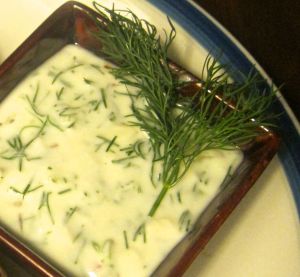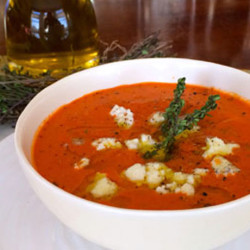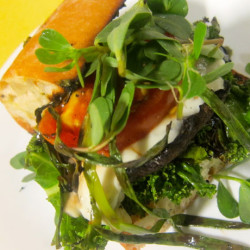Thursday, February 28, 2013
 I was first introduced to Greek food as a child growing up on Long Island, New York: I, like other kids, loved the sandwiches served at the local eatery then called “Shish Kebab.” A Port Washington landmark, it grew from a small, two room dining room into a much larger space, part of a veritable enterprise now including several restaurants as well as a Mediterranean food shop. Though we already ate a lot of seafood on the east coast, Ayhan’s made Mediterranean cuisine accessible and approachable to Long Islanders more than three decades ago. I used to always make sure I went there for a fix when visiting my parents before I started whipping up my favorite meals in my own kitchen.
I was first introduced to Greek food as a child growing up on Long Island, New York: I, like other kids, loved the sandwiches served at the local eatery then called “Shish Kebab.” A Port Washington landmark, it grew from a small, two room dining room into a much larger space, part of a veritable enterprise now including several restaurants as well as a Mediterranean food shop. Though we already ate a lot of seafood on the east coast, Ayhan’s made Mediterranean cuisine accessible and approachable to Long Islanders more than three decades ago. I used to always make sure I went there for a fix when visiting my parents before I started whipping up my favorite meals in my own kitchen.
Greek food is just one example of Mediterranean cuisine, which otherwise incorporates flavors and ingredients from a number of different countries on the seaboard. It features all kinds of wonderful dishes with its focus on olive oil, vegetables, beans and legumes, seafood, and wine, among other things. And let’s not forget about spanakopita, Greek spinach pie, which I haven’t made in ages. Who can resist that with its garlicky spinach, creamy feta, and flaky, buttery phyllo … so delicious …
But not at all the point of today’s post.
Let’s just take it one step at a time, shall we?
Rather, today’s piece begins with a basic Greek condiment, tzatziki, otherwise known and recognized as that very tasty yogurt sauce that often comes alongside sandwiches or souvlaki. Simple to make, just start with yogurt, stir in a few more ingredients, and you’re on your way to enjoying a number of fabulous Mediterranean-inspired dishes.
Tzatziki (Greek Yogurt Sauce)
Ingredients. Nonfat yogurt (preferably Greek but regular really is fine), freshly squeezed lemon juice, olive oil, crushed garlic, fresh dill, black pepper. (Note: some people add diced cucumbers; I don’t. Feel free.)
Instructions. Spoon 16-24 oz of nonfat, plain yogurt into a bowl. Add the juice from 1/2-1 lemon (how juicy is it?), a good drizzle of olive oil a (~1-3 teaspoons), 1-3 cloves of crushed garlic (how much do you like garlic?), and a few grinds of freshly cracked black pepper. Next, toss in 2-4 tablespoons of chopped dill (it really does need to be fresh, not dried). A tablespoon of finely minced white onion or scallions is optional. Mix and let sit at least 20 minutes (an hour is better) to allow the flavors to come together.
Notes. Taste as you go and adjust seasonings as desired: it’s not uncommon for me to add more lemon juice, olive oil, garlic, or dill, depending on how the flavors came together, how good my initial estimations were (I don’t measure anything), and how I’m feeling. Retaste, and you’re ready to go. (Note: Salt is generally not necessary, I find, but add a pinch or two if you find it bland.)
You’ve got your sauce now, which is key. Good job.
Of course, now you need something to serve it with. How about slow-roasted salmon with a chopped Greek salad?? Or a toothsome vegetable kebab? Or perhaps a dollop on a Mediterranean farro salad?
The sky’s the limit!
Assuming there’s still some left once you’ve used it as a dip for veggies or whole wheat pita chips, that is.




